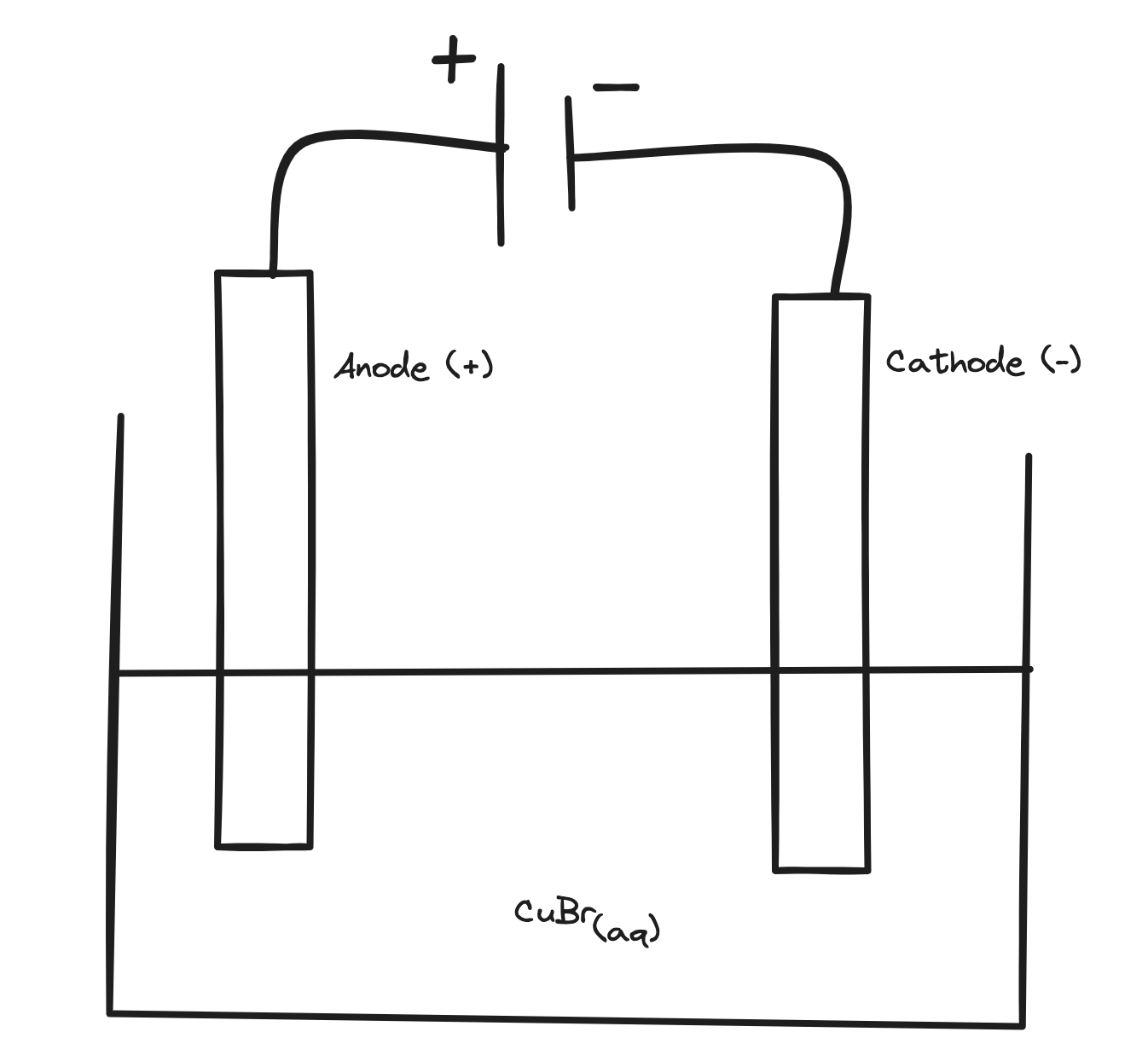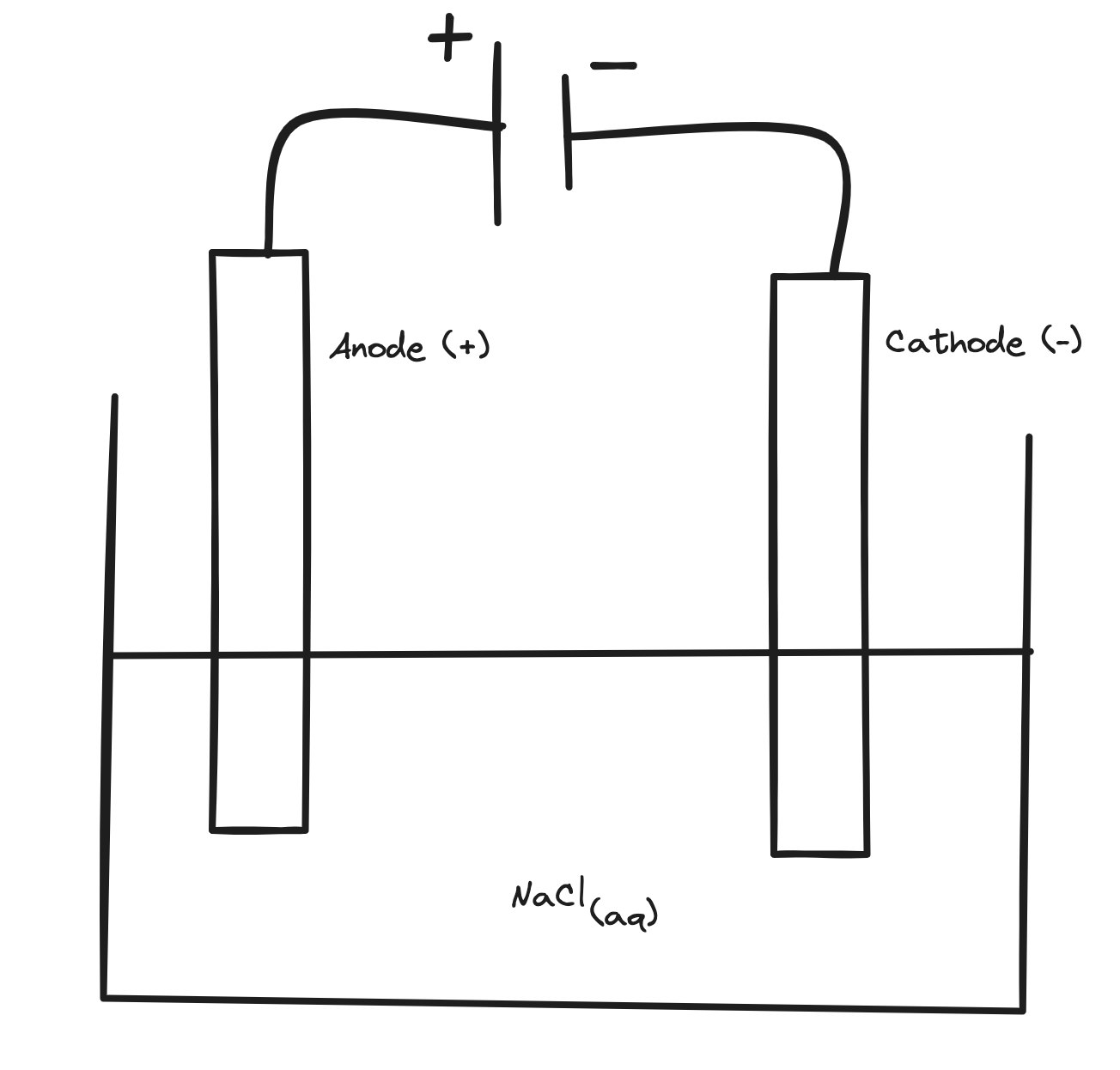Cathode
- Negative Terminal
- Reduction occurs
Anode
- Postive terminal
- Oxidation occurs
Electrolytic cells
- Electrical energy is transformed into a chemical potential energy
- It goes against nature, i.e. it forces a non-spontaneous reaction
Molten Ionic Substance
NaCl Electrolytic Cell
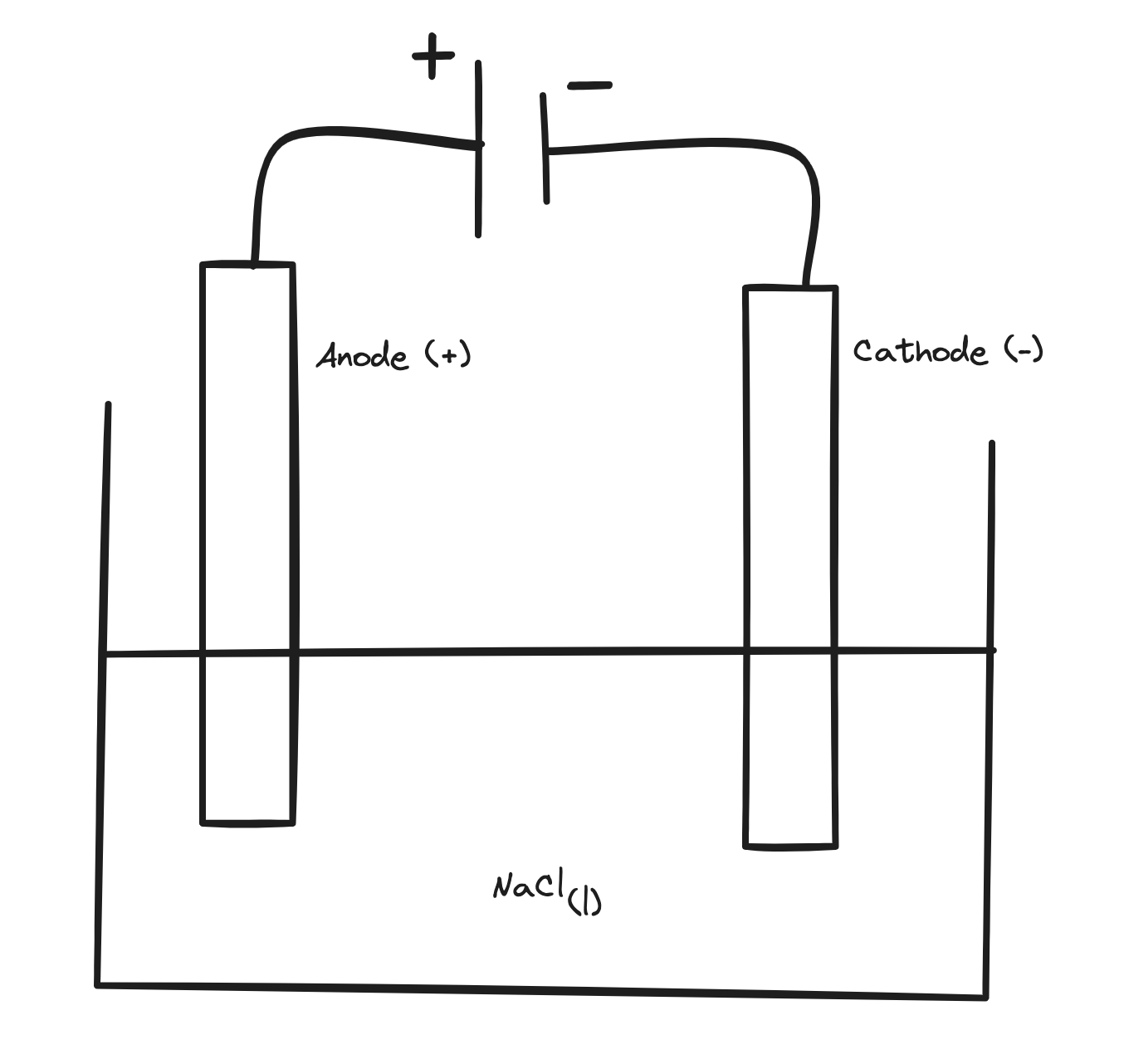
Negative Reduction Cathode:
Positive Oxidation Anode:
Separation is required to prevent the recombination of Na and Cl
Aqueous
- Consider that water molecule can undergo oxidation/reduction and may do so in preference to the other species in the cell
Copper Bromide Solution
Possible reactants??
- Red?
- Ox?
- Red? Ox?
Negative reduction cathode:
Positive oxidation anode:
Observations: Salmon pink solid on negative electrode, orange solution around positive electrode. Blue colour fades
Sodium Chloride Solution
Possible reactants??
- Red?
- Ox?
- Red? Ox?
Negative reduction cathode:
Positive oxidation anode:
Reactive Electrodes
Copper
Possible reactants??
- Red?
- Ox?
- Red? Ox?
- will not react
Negative reduction cathode:
Positive oxidation anode:
Observations: Salmon pink solid deposited on a salmon pink solid
Electro-refining of Copper
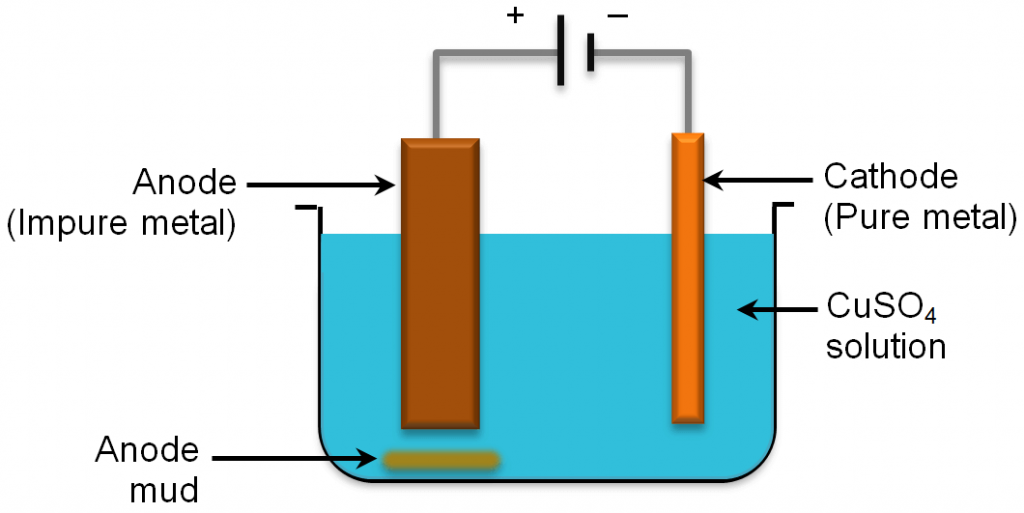
Cathode: Anode: Overall:
A voltage is applied, which forces electrons from the anode to flow into the battery and into the cathode
Stronger reducing agents (e.g. Copper, zinc) are oxidised and enter the solution.
Things that do not oxidise, i.e. strong oxidising agents fall to the bottom as anodic slime.
Copper enters the solution from the impure sample
Copper is the strongest oxidising agent (most likely to reduce) present in the solution, thus reduces at the cathode, while the other metals float around in the solution
At the cathode, ions accept electrons from the negative terminal to produce metal, as it is the most likely reduction.
Thus, pure copper is extracted from impure copper
Electroplating
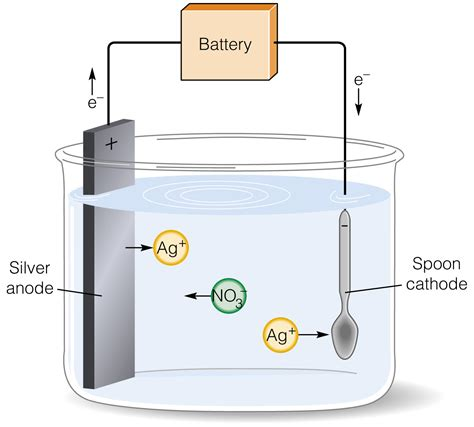 Usually the spoon is iron
Usually the spoon is iron
Cathode: (at the spoon)
Anode:
best results are yielded under low voltage and low concentration
Process:
A voltage is applied, which forces electrons from the anode to flow into the battery and into the cathode
At the cathode (negative electrode), metal ions in the solution are attracted to the cathode, and undergo reduction to form metal. This metal coats the cathode.
At the anode (positive electrode), the metal undergoes oxidation, and the metal dissolves as metal ions are formed.
Thus, a metal coating on the cathode is formed.
Thus, as metal ions are being consumed by the cathode and produced at the anode, the overall concentration of metal ions in the electrolyte remains constant
